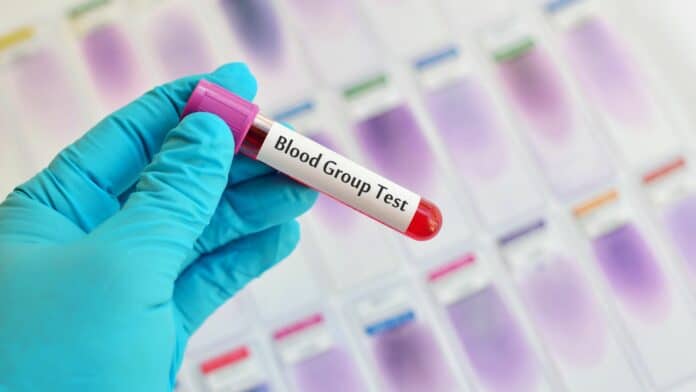Human blood type is determined by antigens on the red blood cells. An antigen is a structure on the cell surface that causes a human immune response reacts to if the structure is foreign to the person’s body. As a result, a blood type match is of critical importance.
Most people are familiar with two blood groups such as ABO or Rh (the plus or minus); many other essential blood groups exist. Scientists from the University of Bristol and NHS Blood & Transplant (NHSBT) have discovered a rare new blood group system.
As a part of an international collaboration, scientists wanted to investigate a 30-year mystery surrounding the basis of three known but genetically uncharacterized antigens that did not fit into any known blood group system.
In this study, individuals who had alloantibodies against a group of antigens known as Er that were discovered more than 30 years ago were examined using a powerful method that allowed simultaneous investigation of all their gene coding DNA sequences. These individuals would produce an altered protein on their cell surfaces due to specific alterations in the gene encoding the Piezo1 protein.
Using gene editing in an immortalized cell line developed in Bristol, the Piezo1 protein was removed and reintroduced to prove alloantibodies to Er antigens (including two never before reported) bind to Piezo1. Piezo1 is required for Er antigen expression.
The team established Er as a new blood group system by clearly demonstrating that Piezo1, a protein of broad biological importance, is the carrier for these sites (and more) using a combination of cutting-edge DNA sequencing and gene-editing techniques.
Discovering the genetic basis of blood groups allows scientists to develop new tests to identify those with uncommon blood groups to provide the best possible care for patients with even rare blood types.
Despite the fact that there is still much to learn about Piezo1, the team’s discovery advances our understanding and marks yet another significant development in the field of blood sciences.
Dr. Tim Satchwell, one of the study’s lead authors at the University of Bristol, said: “This study is a great example of how new technologies can combine with more traditional approaches to address long-standing questions that would have been impossible to answer not that many years ago. Er turned out to be Piezo1, a protein with such widespread interest, which makes it even more intriguing.”
Professor Ash Toye, Professor of Cell Biology at the University of Bristol and Director of the NIHR Blood and Transplant Research Unit, said: “This work demonstrates that even after all the research conducted to date, the simple red blood cell can still surprise us. Piezo proteins are mechanosensory proteins used by the red cell to sense when its being squeezed. The protein is present at only a few hundred copies in the membrane of each cell. This study highlights the potential antigenicity of even very lowly expressed proteins and their relevance for transfusion medicine.”
Journal Reference:
- Vanja Karamatic Crew, Louise A Tilley et al. Missense mutations in PIEZO1, encoding the Piezo1 mechanosensor protein, define the Er red blood cell antigens. American Society of Hematology. DOI: 10.1182/blood.2022016504
